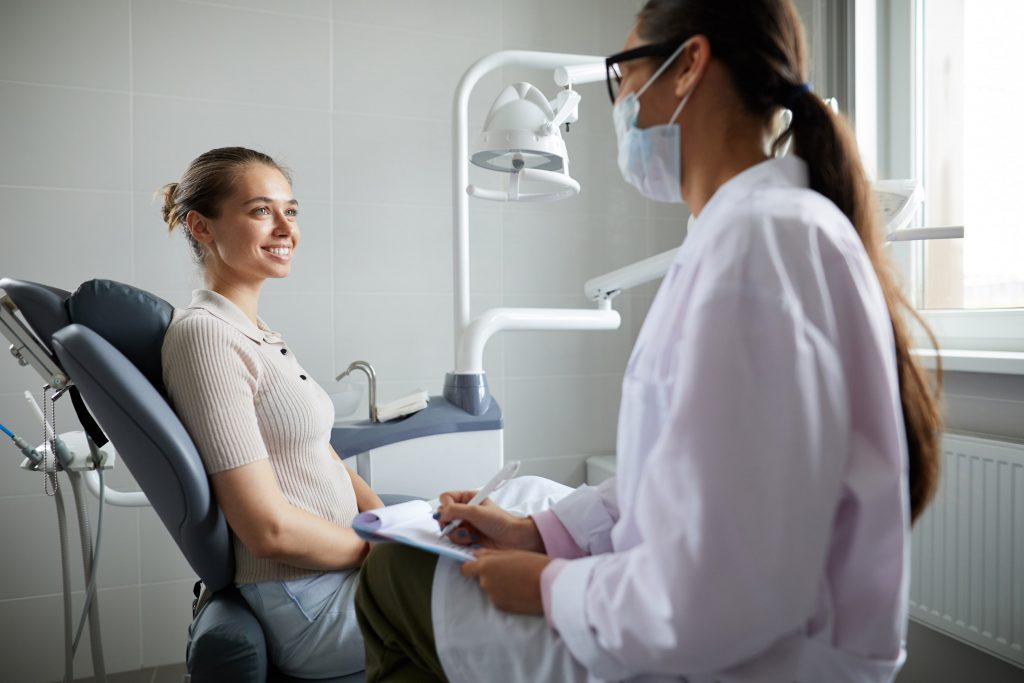To achieve truly unlimited dental practice success, great clinical skills are essential. However, don’t kid yourself into thinking that clinical skill is all you need. I learned that the hard way. Many a talented clinician with the best of intentions has ended up with a failed practice.

The goal of this article is to share with practicing dentists and their dental teams a powerful way to complement clinical excellence by investing no more than 1 to 2 minutes of your time per patient during the day (meaning every patient), the result of which has the potential to strengthen and grow your practice tremendously. And there is absolutely no cost, product, or service involved, and little to no training. It is amazing how little this is talked about in the industry, let alone acted upon. It does require intention.
In 3-plus decades of clinical dentistry, I have learned that building personal patient rapport into your daily protocols reverberates positively through your entire practice, team, and patient base. In fact, adding patient rapport to great clinical dentistry skills can be life-changing for your confidence, your emotional well-being, and your professional and financial success. Here’s some background and ways to be sure that you get the best possible impact from making patient rapport an integral part of your practice.
Let’s consider new patient examinations. How many times have you walked into an operatory to see a brand-new patient prepared with only clinical information? For instance, you may be running behind, feeling rushed, and quickly introduce yourself by saying, “Hi, I’m Doctor Jones.” How are you today?” Or you may even skip the hello and start with something like “I understand you have some pain on the left side of your mouth,” and then move right into further exploring the patient’s signs and symptoms, etc. That’s what I call starting with “clinical rapport,” where you lead by attempting to wow the patient with your vast knowledge of dentistry. If so, you are missing a wonderful opportunity to create a powerful personal bond with the patient as your first impression rather than trying to “catch up later” or hoping that your team will take care of building patient rapport “later.”
Interestingly, it turns out that establishing great patient rapport in its best form is a team undertaking. For instance, you know that there are several steps that must occur involving several team members before the doctor sees a new dental patient for the first time. The initial patient phone call, the patient presenting at the front desk for his or her first appointment, the team member who walks the patient to the operatory or consultation room, etc. Each of these touchpoints is an opportunity to gather and make a note of personal information about the patient. The act of staff interacting with the patient at a personal level, in itself, begins to build a personal connection (rapport) between the team and the patient. Sharing the personal touchpoints almost always will provide the dentist with enough personal information to easily begin to connect with the new patient on a personal level as soon as the doctor steps into the operatory—provided that the team member takes a moment to share the personal information with the dentist before he or she enters the operatory or consultation room. There is next to no value for a dentist to find out after the first meeting with the new patient that the patient’s close relative has passed. Doing so represents a clear loss of opportunity for the dentist to express the highest level of sympathy and empathy during the examination, in real-time, and sets up the doctor to inadvertently stick his or her foot in his or her mouth by saying something inappropriate.
Connecting with a patient at a personal level, be it about the weather, the patient’s love of dogs or cats, his or her family, occupation, etc, ie, creating “personal rapport,” is critical in establishing an emotional bond with the patient, which translates into higher levels of trust and loyalty. That trust and loyalty pays great dividends when it comes to treatment acceptance, referrals, lifelong patients, and reduced no-shows.
None of this is meant to imply, in any way, that clinical rapport is not important. It is important, however, it should be obvious by now that for the biggest bang for your minimal investment in time, personal rapport must lead, followed by clinical rapport. In other words, “chairside manner” is most effective as a combination of skilled personal rapport and skilled clinical rapport.
A good reference for this kind of thinking is covered very well in Tony Robbins’ work in Mastering Influence. He uses the terms “Emotional Reasons to Buy Now” (ERBN) and “Logical Reasons to Buy Now” (LRBN), which can be applied to dentistry as follows: ERBN is equal to personal rapport, followed by LRBN, which is equal to clinical rapport. To embed this magic into practice, we instituted the following protocols:
1. The hygienist or dental assistant provides the doctor with something personal about the new patient along with the clinical concerns. If the hygienist or dental assistant’s answer is “The patient didn’t say anything about himself/herself,” the team member is asked to go back and connect with the patient personally. There is always something personal that patients are happy to share, if and only if we simply start up a very brief conversation that is not clinical at the outset. Yes, some situations preclude a nice, personal, low-key conversation, such as a patient presenting with acute pain, where empathy and caring serve as an appropriate proxy. Ultimately, I highly recommend that dentists never see a new patient without being debriefed by the team member first. This protocol will 100% help the dentist avoid finding himself or herself sticking his or her foot in his or her mouth, as mentioned above, by inadvertently saying something inappropriate.
2. As alluded to previously, it is helpful to append new patient personal notes to the new patient chart (loves football, birds, cats, his or her profession, recent vacation, etc). Bringing those tidbits up at the next appointment is always appreciated by the patient.
3. So impactful was the personal rapport created with new patients that I added the protocol of never going into any operatory without a brief discussion with the dental assistant or hygienist regarding both clinical and personal information, regardless of the type of appointment—recall, crown seat, restorative, endo, etc. This takes seconds, not minutes, and will make you pretty much immune to running into awkward situations while building both personal and clinical rapport.
Finally, it is very important that the dentist(s), as the clinical leaders of the business, set a good example for the team by demonstrating wonderful personal (and clinical) rapport with patients, especially new patients. The doctors’ efforts to establish patient rapport will affect the team positively, increasing respect and admiration of the doctor(s). Additionally, the team will enjoy providing the doctors with feedback from patients who have raved about how wonderfully the doctors cared for them and the team as a whole. And, as you must know, patients generally talk to friends, family, and coworkers about how nice (or otherwise) their dentists are rather than how clinically adept they are.
Practicing clinical dentistry can be very challenging in so many ways. Patient and dental team rapport, coupled with excellent clinical dentistry, can make a noticeable difference in quality of life broadly within a practice. With the dentist and team fully committed to establishing great personal rapport for all patients, the culture within the team will be uplifted, the feeling of connectedness will blossom, dentists will be happier, and patients will feel thankful and well cared for. Everything from diagnostic records, consultations, treatment planning, payment for services, showing up for appointments, and any ongoing treatments will flow much more easily than you can imagine. Simply put, people who like you, trust you, and respect you, are more fun to work with, more compliant, and far more likely to refer friends, family, and co-workers to your wonderful practice.
ABOUT THE AUTHOR
Dr. Cassidy received his MPH degree from the University of North Carolina, Chapel Hill, and his DMD degree in general dentistry from the University of British Columbia. He is a seasoned dental professional with a history of leadership and innovation as both a practicing clinician and an entrepreneur. Currently the chief dental officer at Net32, he builds upon his extensive experience in shaping the dental supplies marketplace. Having served as CEO and co-founder of Net32 from its founding in 1997 to 2022, he made a significant impact on the organization and the dental industry as a whole. Prior to Net32, Dr. Cassidy founded Research Triangle Dental in 1992 and held prominent roles in the British Columbia Division of Dental Health Services. Dr. Cassidy is based in Cary, NC. He can be reached at pcassidy@net32.com.

Pat Cassidy, DMD, MPH
Disclosure: Dr. Cassidy is co-founder and chief dental officer of Net32, Inc.












